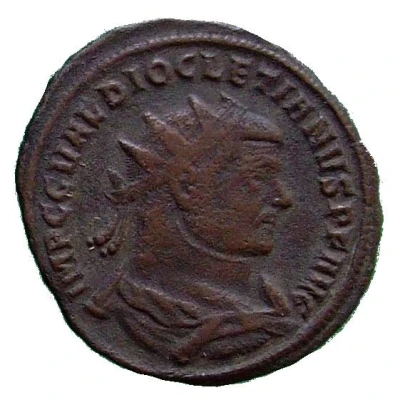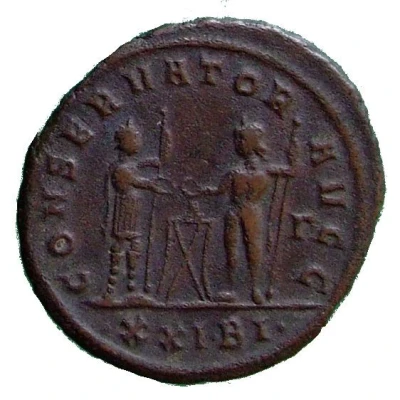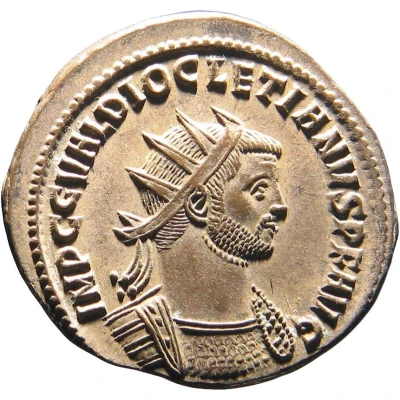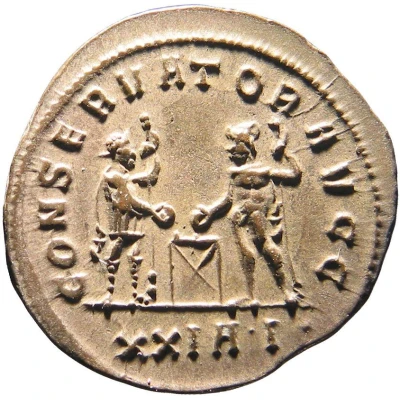


© Institute of Classics/University of Graz
Antoninianus - Diocletianus CONSERVATOR AVGG
| Silver | 4 g | 23 mm |
| Issuer | Rome › Roman Empire (27 BC - 395 AD) |
|---|---|
| Emperor | Diocletian (Gaius Aurelius Valerius Diocletianus) (284-305) Maximian Herculius (Marcus Aurelius Valerius Maximianus) (286-305) |
| Type | Standard circulation coin |
| Years | 289-290 |
| Value | Antoninianus (1) |
| Currency | Antoninianus, Reform of Caracalla (AD 215 – 301) |
| Composition | Silver |
| Weight | 4 g |
| Diameter | 23 mm |
| Shape | Round (irregular) |
| Technique | Hammered |
| Orientation | Variable alignment ↺ |
| Demonetized | Yes |
| Updated | 2024-10-05 |
| Numista | N#306074 |
|---|---|
| Rarity index | 93% |
Reverse
Diocletian, draped, standing right, and Jupiter, standing left, each holding sceptre and sacrificing at altar.
Script: Latin
Lettering:
CONSERVATOR AVGG
-/-//AXXI•I•
Translation:
Conservatori Duorum Augustorum.
Protector of the two emperors (Augusti).
Comment
Mass varies: 3.25–4.502 g;Diameter varies: 22.5–23 mm;
Example of this type:
Institute of Classics/University of Graz
Source:
Online Coins of the Roman Empire (OCRE)
Interesting fact
One interesting fact about this coin is that it was issued during the reign of Diocletian, who was the last emperor to attempt to reform the Roman Empire's currency system before its eventual collapse. The Antoninianus, which was introduced by Diocletian in 293 AD, was a silver coin that was meant to replace the debased denarius, which had become nearly worthless due to rampant inflation. The coin was named after the emperor's name, Antoninus, and it was intended to be a symbol of the empire's renewed strength and stability. Despite these efforts, the Roman Empire continued to decline, and the Antoninianus ultimately became just another example of a failed currency reform in the empire's history.

